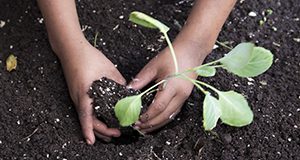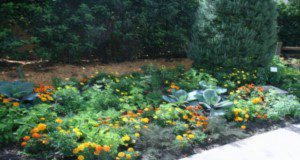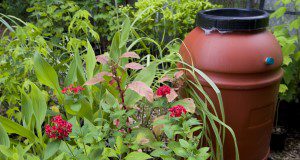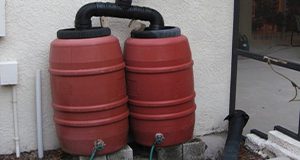Home vegetable gardening has numerous documented benefits, including savings on the family food bill. How can a gardener calculate cost savings from a garden? Which vegetables cost more to grow in the garden and which cost less? This 10-page fact sheet written by Kevin Athearn, Hannah Wooten, Liz Felter, Catherine G. Campbell, Jessica M. Ryals, Matthew C. Lollar, Juanita Popenoe, Lorna Bravo, LuAnn Duncan, Christa Court, and Wendy Wilber and published by the UF/IFAS Food and Resource Economics Department helps home gardeners estimate the costs and cost savings from vegetable gardening.
https://edis.ifas.ufl.edu/fe1092
Tag: Wendy Wilber
Edible Landscaping Using the Nine Florida-Friendly LandscapingTM Principles
Maintaining edible landscapes in a way that protects the environment is an important concern for protecting Florida’s water quality. The objective of this new 7-page publication is to introduce the framework of the Florida-Friendly Landscaping™ principles and apply the principles to guide decisions about Best Management Practices (BMPs) for care of edible landscapes. Written by Tiare Silvasy, Lynn Barber, Esen Momol, Tina McIntyre, Tom Wichman, Gail Hansen, Jen Marvin, Terra Freeman, Joseph Sewards, Wendy Wilber, and Jacqlyn Rivas.
https://edis.ifas.ufl.edu/ep594
Floridians' Engagement in Landscape Best Practices to Protect Water Resources: Information from a 2018 Survey
Extension programs are most effective when informed by a deep understanding of the target audience. To guide programs in Florida’s managed landscapes, especially pertaining to water quality and conservation, faculty from the UF/IFAS Center for Landscape Conservation and Ecology conduct an annual statewide survey. The survey gathers data that includes common landscape elements, neighborhood characteristics, engagement in irrigation and fertilizer best practices, and learning preferences. This new 5-page publication of the UF/IFAS Department of Agricultural Education and Communication presents highlights from the 2018 statewide survey with recommendations for how to use the information. Written by Laura A. Warner, Esen Momol, Claire Lewis, Tom Wichman, Wendy Wilber, and A. J. Reisinger.
https://edis.ifas.ufl.edu/wc345
Rain Barrel Owners: Meeting the Programming Needs of This Unique Extension Audience
Rain barrels make it easy for households to practice water conservation. Extension programs for rain barrel construction, decoration, and giveaways can raise awareness for (and encourage use of) this technology. This 9-page document will provide insight into the behavior and attitudes of rain barrel owners so that Extension professionals may gain a better understanding of this unique audience. Written by Emily Ott, Paul Monaghan, Wendy Wilber, Lynn Barber, and Karissa Raymond and published by the UF/IFAS Department of Agricultural Education and Communication, March 2018.
http://edis.ifas.ufl.edu/wc297
ENH1160/EP420 Community ButterflyScaping: How to Move Beyond Butterfly Gardening to Create a Large-Scale Butterfly Habitat
ENH1160, a 20-page illustrated fact sheet by Kathy C. Malone, Wendy Wilber, Gail Hansen, Jaret C. Daniels, Claudia Larsen, and Esen Momol, provides developers, community associations, and homeowners with guidance in planning the vegetation in common areas, stormwater management systems, undeveloped areas, and yards to form large-scale habitats attractive to butterflies, pollinators, birds, and other local wildlife. Includes references. Published by the UF Department of Environmental Horticulture, Spetember 2010.
http://edis.ifas.ufl.edu/ep420



